We are 4 days into the school year and today did not go exactly as planned. Well.. there really was no “plan”. The children are still getting acclimated to their new space and new teachers so there really wasn’t a set plan. However when two children handed me bird nests at the door this morning, light bulbs went off in my head and I developed a plan to explore the nests. I had big ideas and expectations, we were going to discover what kind of birds lived in the nests, where did they go, what did they eat, what materials did they use to make their nests. All sorts of inquiry, provocation and discoveries were floating through my head. I had visions of total engagement everywhere, this was going to be awesome! Child directed, teacher facilitated, emergent learning was going to happen in my classroom today. And it was all going to revolve around nature, learning outdoors and bird nests!
After our morning meeting, I rather enthusiastically told the children I had something to show them. I took a large round mirror and placed it on the floor in the center of the children’s sitting circle. I turned around to get the birds nests to place on the mirrors and when I turned back, all the children had huddled together looking at the mirror. They squeezed together to get a view of themselves and each other. Conversations and funny faces were non stop.
I tried several times to draw their attention back to my bird nest enthusiasm. My attempts were unsuccessful. It wasn’t going to happen, I was losing them to a mirror! A common household fixture! Hmmm, I paused, shrugged and looked at my assistant teachers. Sometimes we have to let it go and go with the flow. We switched gears to follow the children’s lead. We gathered our additional mirrors in the room and placed them in the circle so all the children could participate. I then created an action direction; 1, 2, 3 switch. Since all the mirrors were different sizes I wanted the children to be able to view themselves from different reflections. On the count of 3 they had to move to another mirror and describe what they saw. 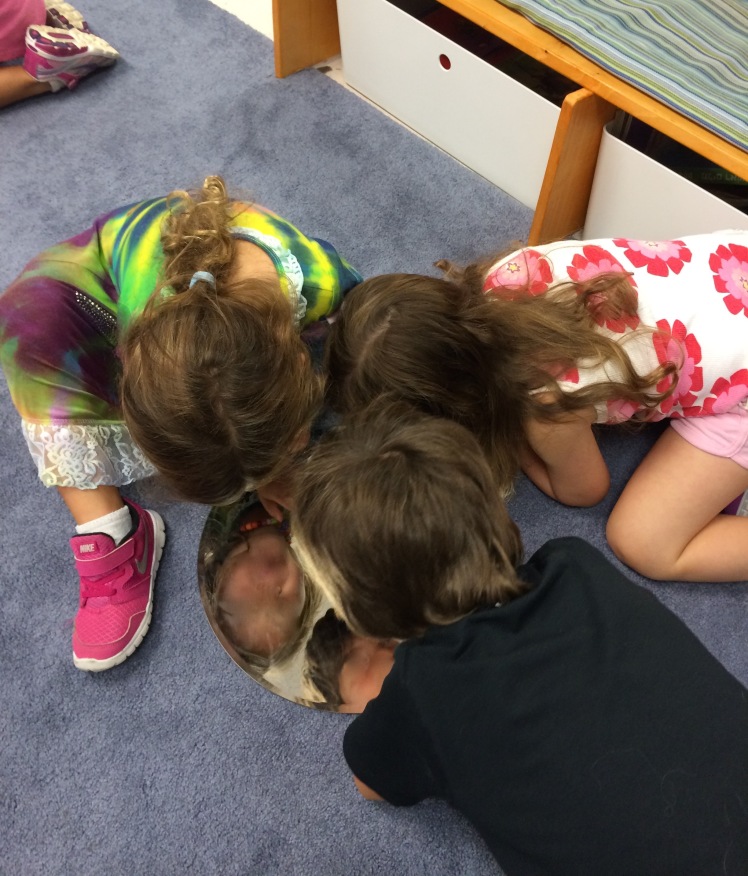
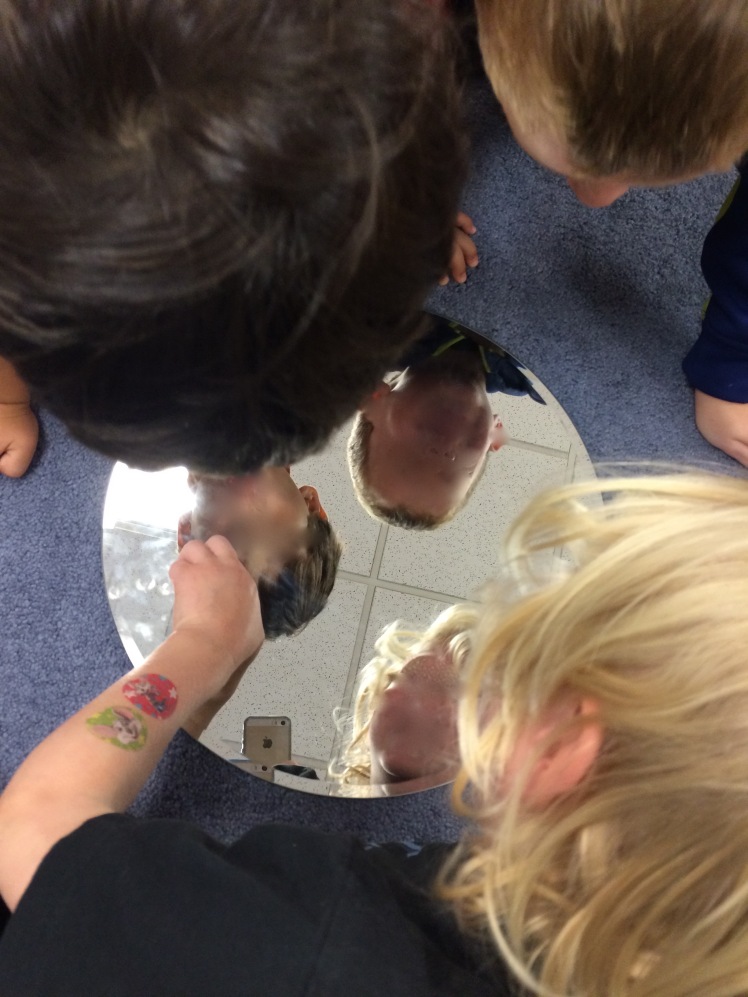
They laughed, chatted and explored with their different facial expressions. They got up close with themselves, turned their heads for side views, and one child observed me from across the room. As they switched they noticed different observations. We turned off the lights to see if their observations would change. I then asked if they could build their faces in the block area. We knew there was a giant mirror on the wall and they could use that to help them reflect. They began to create using the different materials in the block area. To capture and document their work, we held a round mirror to reflect their real face. This also helps to give their work ownership.
Here three half circle were used to create the round face and then a smile.
This child used blue eyes and a giant smile to reflect herself.
Here is a different kind of smile with half circles coming together to make full circles for eyes.
Notice this child used the animals to create a circle head, then used the blocks for eyes, nose and mouth. The two round blocks outside of the animal circle are legs.
This face has block ears and used part of the rainbow blocks as a mouth.
This child used a spool table as her canvass. She used the center of the “table top” as her nose.
Dominos make a circle, smiling face with eyes and nose side by side.
This boy found two sticker dots on a block and made that his eyes.
To finish off the lesson we read The Way I Feel and discussed the different facial expressions and their meanings. We talked and documented in our journals how the different faces mean different emotions. Emergent curriculum did erupt in my classroom but not in the way I expected. It became an awesome lesson, that turned out to be engaging and reflective. This was an easy direction to go because I trusted the children to lead the way. …We never did get to the birds nest but I am still hoping the children will take notice and want to explore more..perhaps follow my plan with a plan of their own? I’ll keep trying :)!
Follow up: I did write this post a few days ago and the children have since taken interest in the bird nests, they even created one outside and keep checking to see if birds are using it. More on that another time.
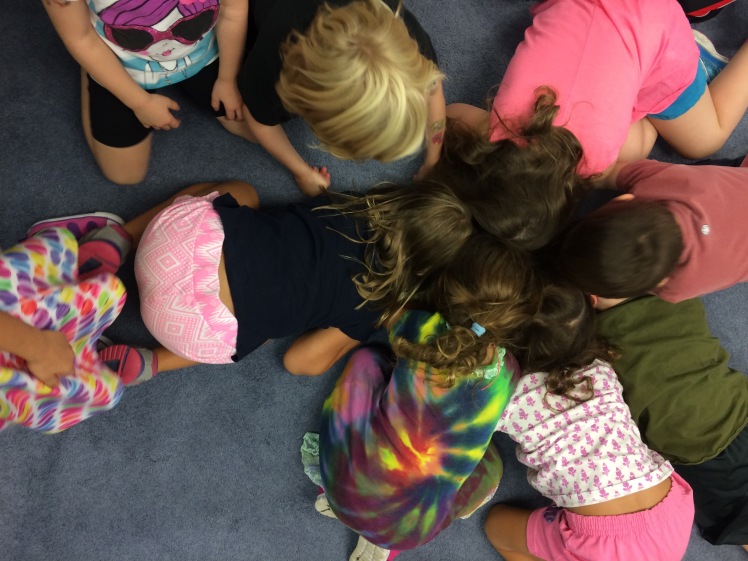
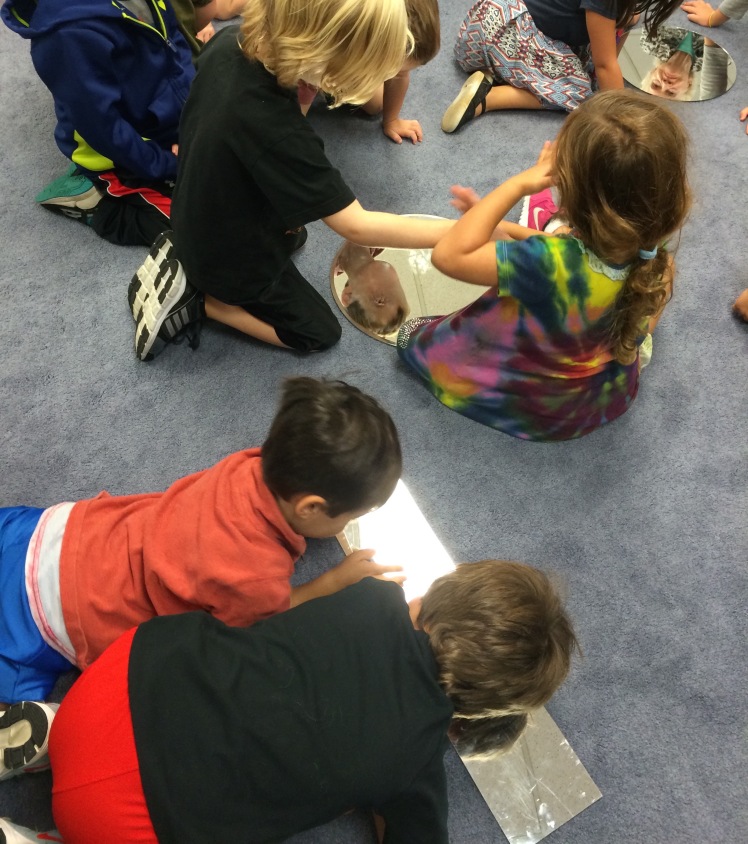
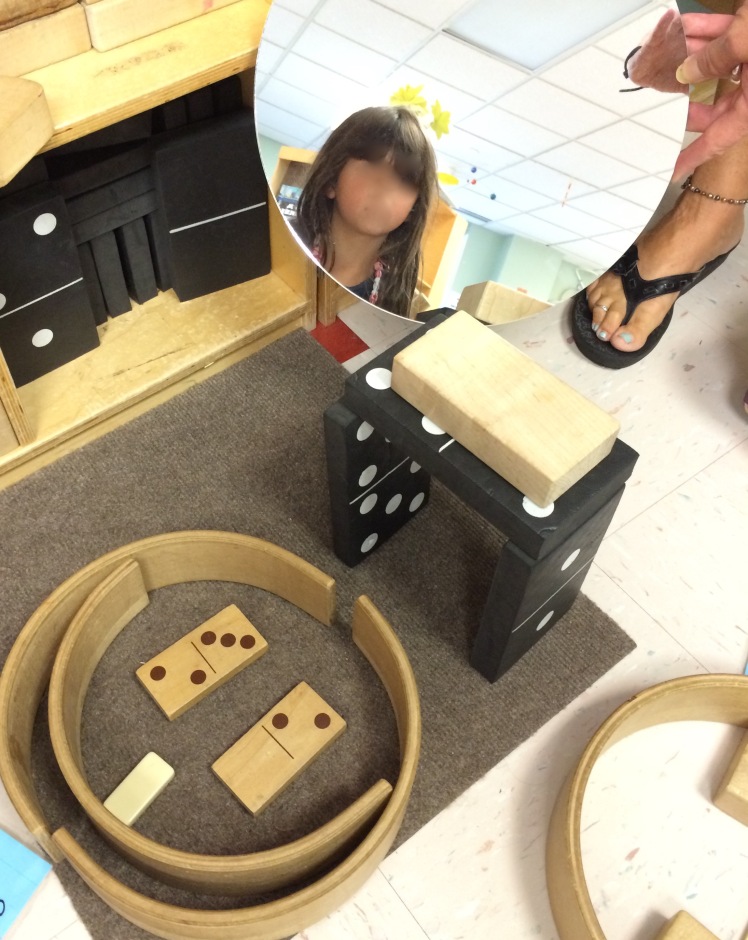
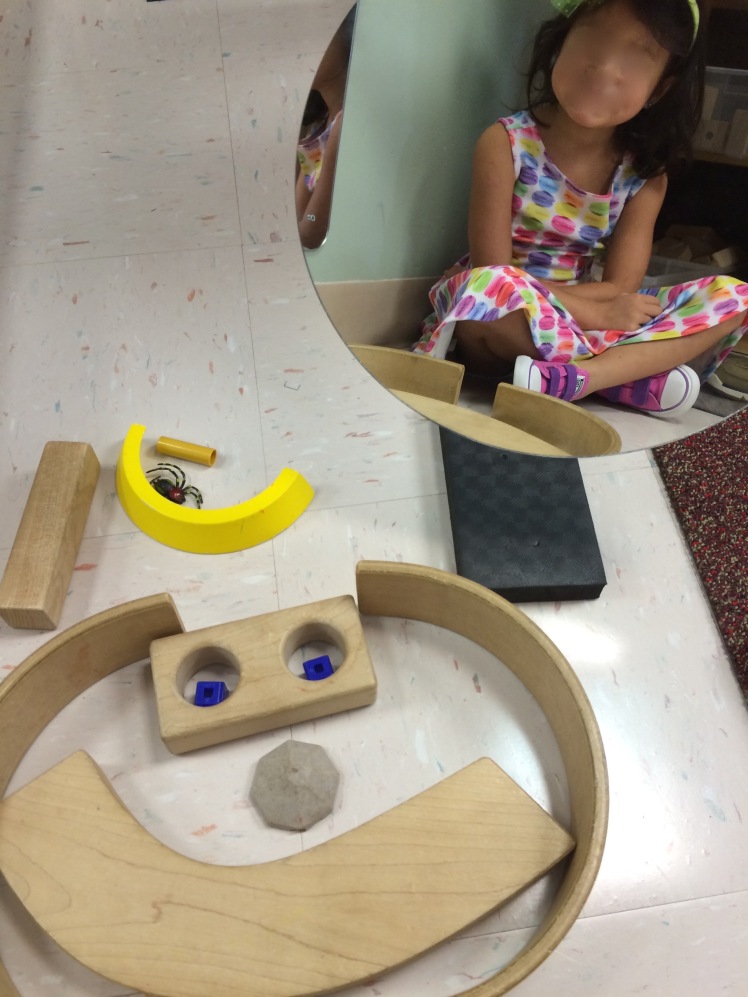
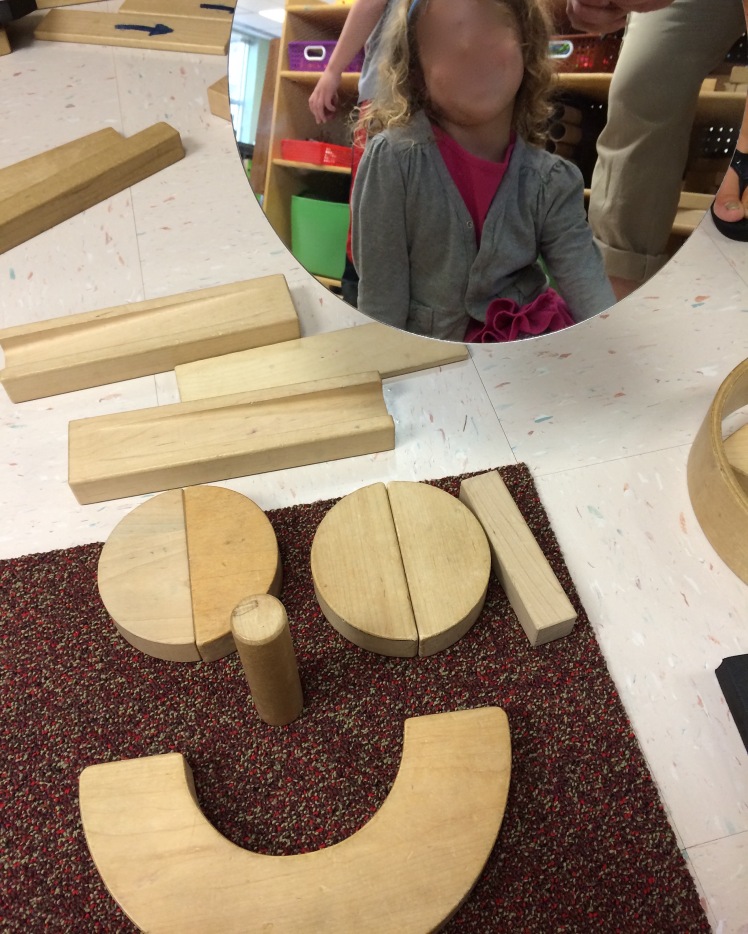
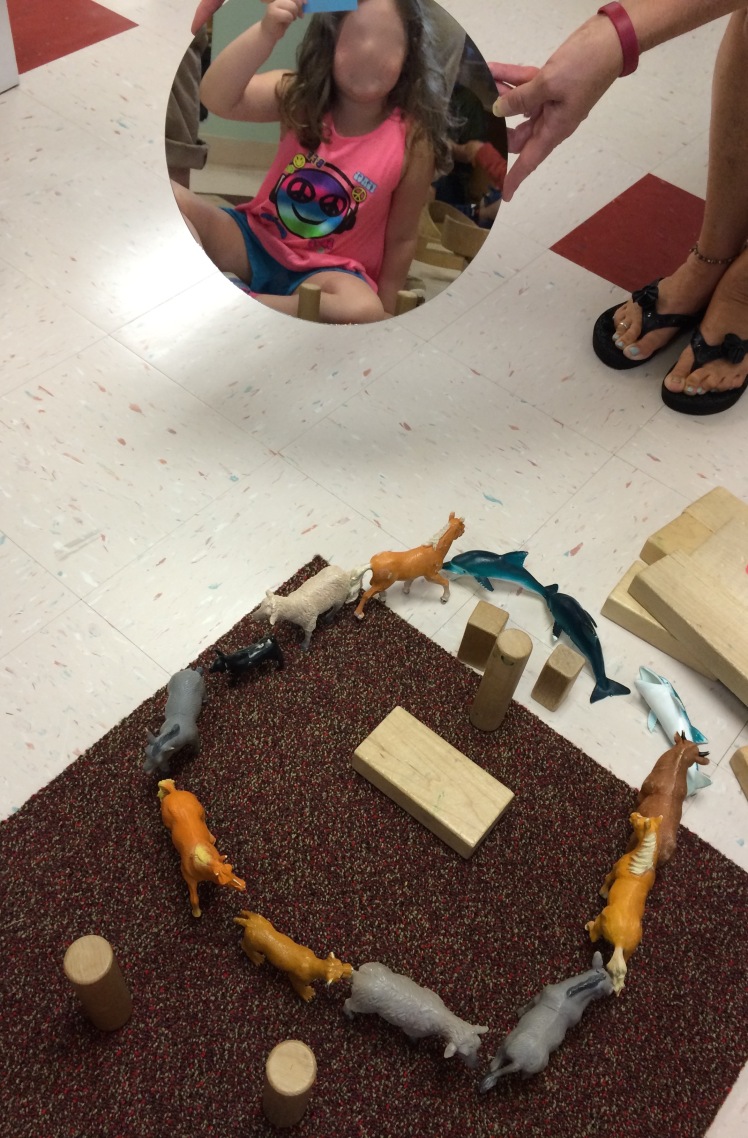
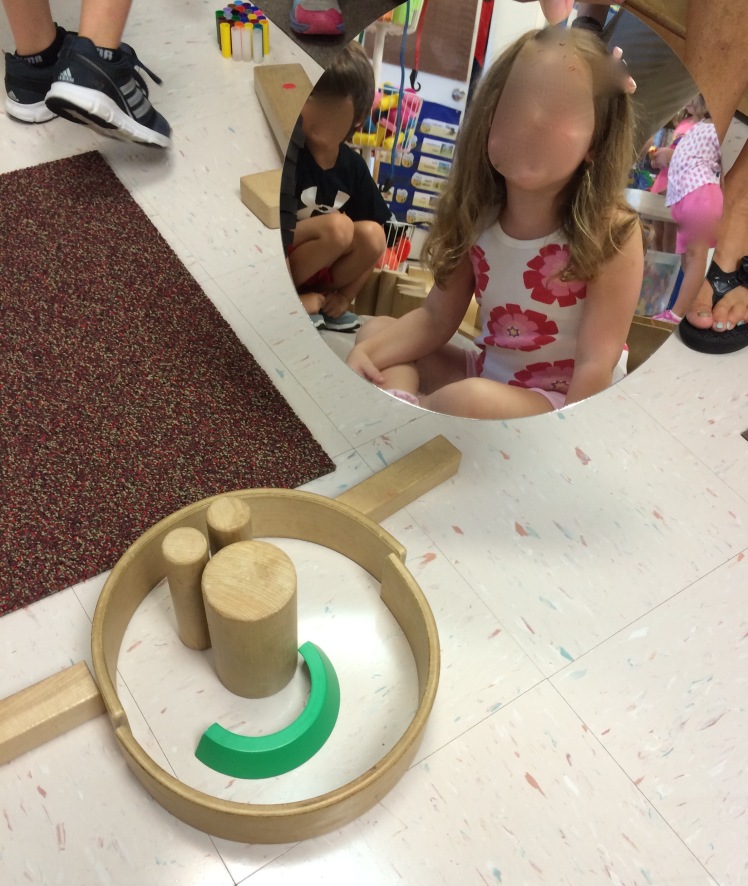
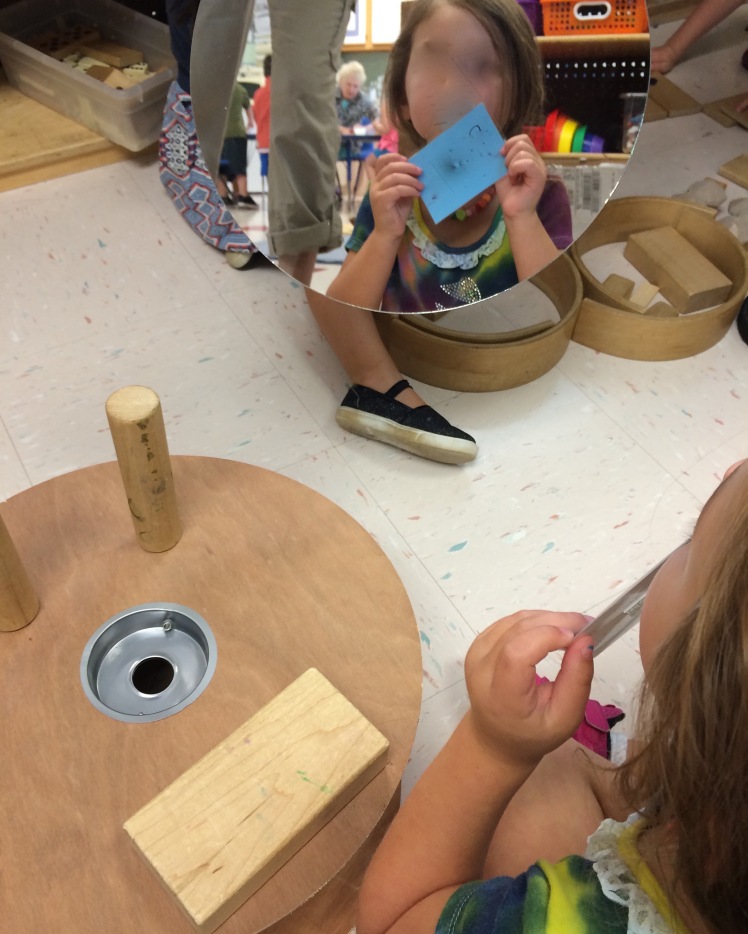
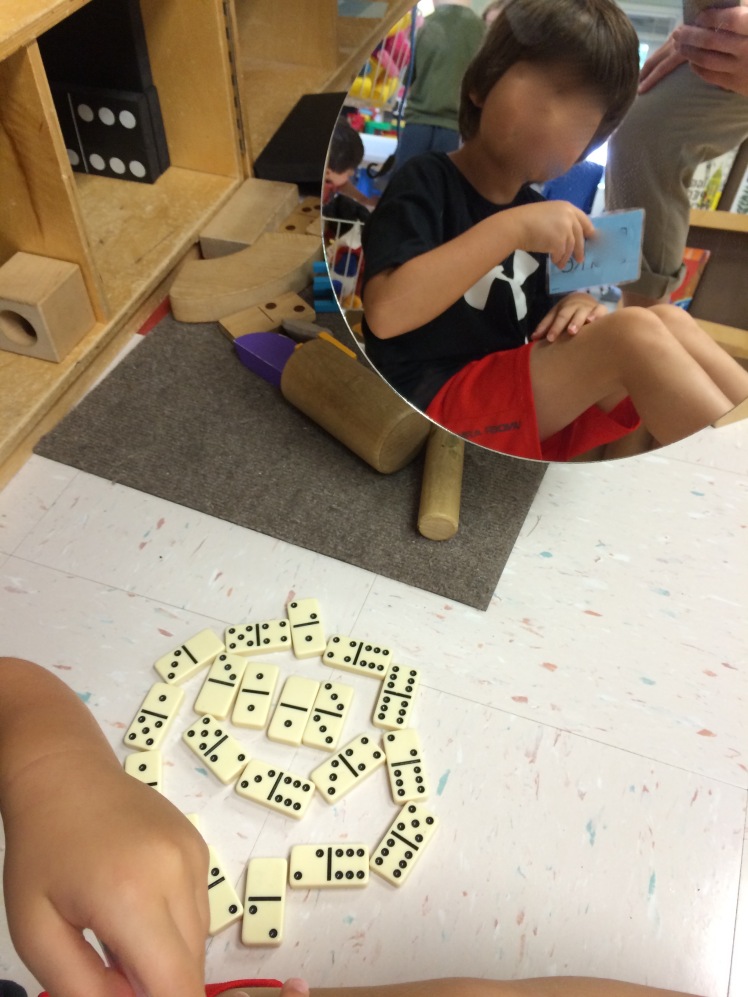
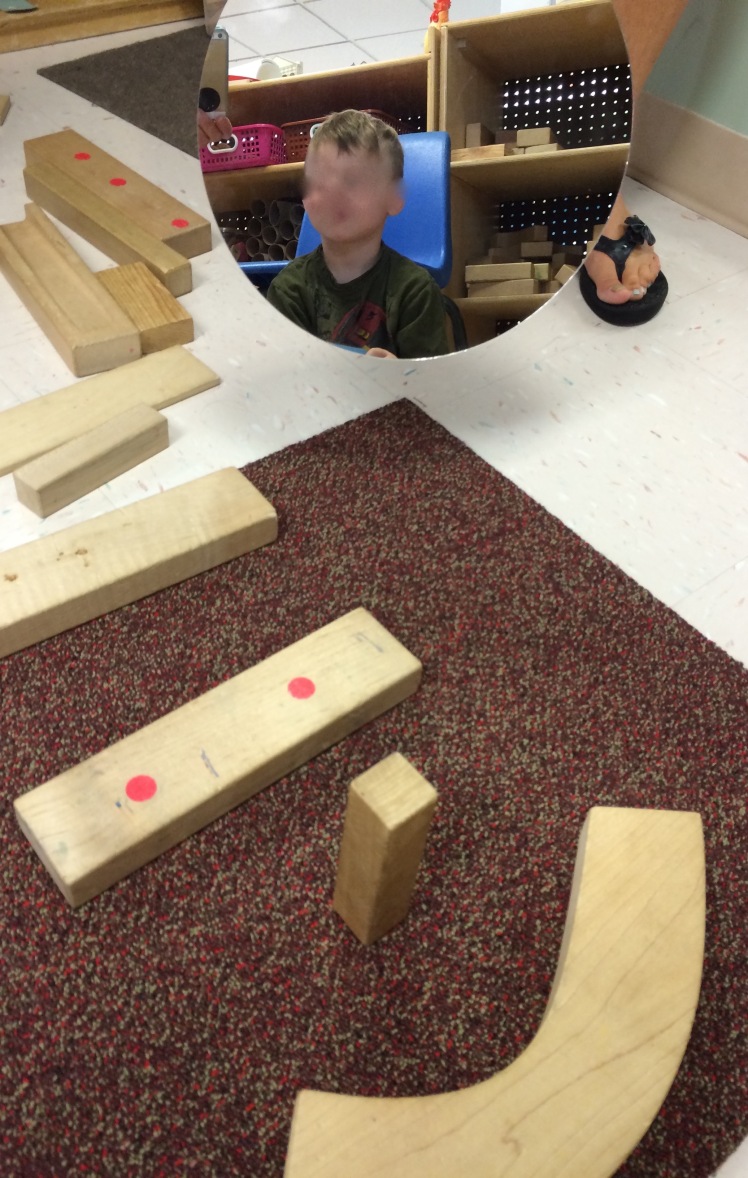

Absolutely brilliant. Love how sometimes we really do need to abandon all plans we have to follow our students lead. It’s a scary step to take when first entering the FDK realm however a great way to approach learning for our youngest students.
Quick question for you: what are the journals you talk about and how do you run that piece of your program?
Thanks for sharing – are in an FDK class of JK/SKs in Ontario?
LikeLiked by 1 person
HI Kim, thank you so much for your comments! It is not easy to switch gears but we must to keep children engaged and positive about learning. I teach full day Prekindergarten in NJ. I believe our PreK is the equivalent to Ontario’s JK? We have blank page (no line) journals or drawing notebooks. The children use to express thoughts to provocations, record observations on whole group activities, create designs and free drawing/writing. This does not take away from loose paper which is always available in the room. The journals elevate their learning. We found this gives the children ownership and empowers their creative writing process. It’s also a nice way to document their writing. Parents and teachers can follow their growth as the year goes on. They take it home at the end of the year. The children enjoy looking through them too.At back to school night I have the parents write a message in the journals for the next day. The children LOVE that! Thanks again for your comments!
LikeLike
I had tears streaming down my face. Hysterical. Yet, brilliant teaching practice too. This type of reaction is exactly what children need, to have teachers who trust the process of learning. Nan and her wonderful teaching team could easily have pushed the children to a predetermined outcome. But they too are engaged in the action. They too want to see where a moment can be taken. And they have enough tools “in their toolbox” to be able to immediately extend the moment. These children are engaged in legitimate and important learning that will ultimately turn them into excited and capable risk-taking minds.
LikeLiked by 1 person
Thanks Sara! I am glad you saw the humor! Pausing and redirection is difficult for teachers but so important to practice. We must be able to laugh at ourselves. The joys of teaching!
LikeLike